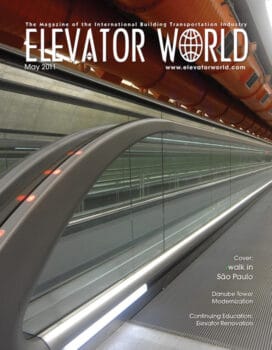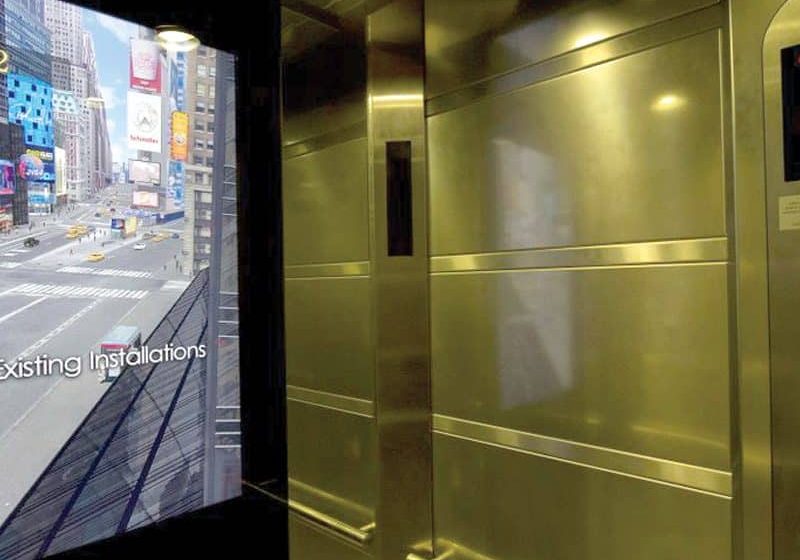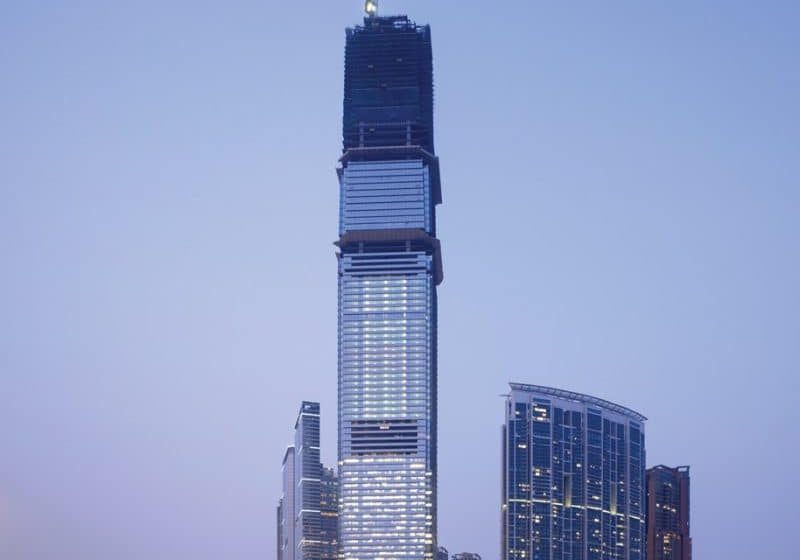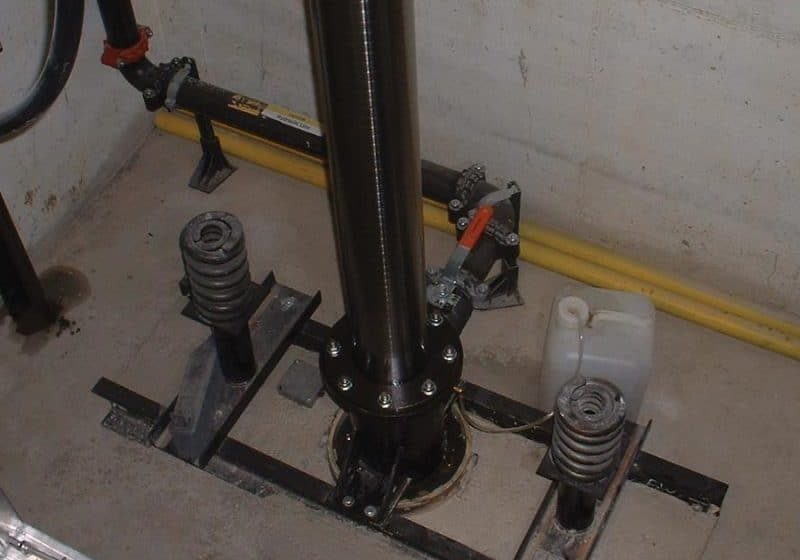This is the third and final article in a three-part series that examines movies featuring an elevator as a primary setting, rather than just as a prop that facilitates action. The initial research for this series identified seven movies that featured elevators in a leading role; however, as the investigation continued, the total in-creased to 14. The movies examined this month continue to illustrate the international appeal of the elevator as a setting for moviemaking and include films made in Turkey, Japan, Russia, Romania, Bolivia and the U.S. Due to the increased number of movies discovered, the account of each film in this article will be brief; however, a future exhibit in the on-line Elevator Museum (www.theele-vatormuseum.org, supported by The Endowment for the Preservation of Elevating History, Inc.) will provide more information on these films and this important aspect of elevator cultural history.
The 1999 Turkish film Asansor (The Elevator) employs an elevator in an abandoned apartment building as a primary setting. In this film, the elevator is set up as a trap for a television journalist, who is blamed for the death of two people. The film focuses on the reporter’s captivity and physiological torment over a four-day period. The elevator features a wonderful 19th-century open-cage car, which operates as an open-work shaft that runs through the center of the building’s main stairwell. Both the car and shaft are used to good effect. The filmmaker listed the 1958 French film Ascenseur pour l’Échafaud (Elevator to the Gallows) as one of the inspirations for his movie and, in an ironic twist, movie viewers watch as the reporter sees the earlier film’s opening credits appear on a television located outside the car. A somewhat unique approach to the “trapped in a elevator” theme was taken in the 2004 Japanese film Gusha no Bindume (released in the U.S. as Hellevator and also known as The Bottled Fools). The film is a blend of science fiction and horror, and features an elevator that carries passengers from the lower depths of an underground world to the upper levels. A bizarre rack-and-pinion-drive elevator climbs the side of a cliff-like wall, and the car features a wonder-fully complex and eccentric control system, which is used by the female elevator operator. It should be noted that while the elevator is fascinating, the movie includes scenes of disturbing violence.
The independent film Elevator Movie, which was described in its press kit as a “Surreal dark comedy in which a man and woman get trapped in an elevator and are forced to live there for months,” is an equally unique film also released in 2004. However, the film never exploits the potential of the elevator –the car is a boring, nondescript room simply equipped with a call-button panel and emergency intercom – and it appears to have been selected as the movie’s setting only because it offered a plausible space where two people could become “trapped.” This film is also truly, as proclaimed by one reviewer, “not for everyone.”
The 2006 Russian film JIиФт (Lift) and the 2008 American film Blackout follow a more familiar pattern, with both plots addressing the actions of a group of strangers trapped in an elevator. JIиФт, which was marketed as a “psycho-mystical thriller,” offers viewers excellent shots of the elevator car speeding down the shaft (in this film, the elevator never stops moving), imagined scenes of cables breaking and brakes gripping guide rails, and a wonderful dream-like scene of freestanding open elevator shafts rising into the clouds. Black-out, which was based on an Italian novel by Gianluca Morozzi, stars Amber Tamblyn, Aidan Gillen and Armie Hammer as the three trapped passengers. The setting is an old elevator in an essentially vacant apartment building. This movie is also a thriller (one of the passengers is a serial killer), and it makes good use of the elevator and shaft in telling its story.
Unfortunately, I have only seen the trailer for the 2008 Romanian film Elevator, which received numerous film awards in Europe and the U.S. (The filmmaker hopes that a DVD will be released soon.) The movie’s story was summarized as follows: “A boy and a girl, high-school teenagers, want to get away from the world and be alone for a while, so they hide in an abandoned factory on the outskirts. But there, they fall in a trap of their own intention, and get stuck in the cargo elevator.” Regrettably, the trailer does not provide enough visual evidence to determine how effectively the elevator is used in the film.
The 2009 Japanese film Akuma No Elevator (also known as Elevator Nightmare and Elevator Trap) is based on a 2007 graphic novel by Hanta Kinoshita titled Akuma no Elevator: Nightmare after a Secret. The film tells the familiar story of strangers trapped in an elevator and, with the exception of a few scenes, does not fully exploit the potential offered by its primary setting.
I have also only seen the trailer for the 2009 Bolivian film El Ascensor (The Elevator); however, I’m hoping to be able to purchase a DVD soon. The film concerns a businessman who is abducted by two thieves and taken back to his apartment building so that they can rob him. However, predictably, the elevator stops working, and the three men are trapped in the car. The trailer appears to indicate that the movie, described as a thriller, makes effective and dramatic use of the elevator setting.
The last film viewed for this article was the 2010 film Devil, produced by M. Night Shyamalan. Although it features a few clearly implausible scenes (such as the maintenance man rappelling down the shaft), the movie makes full use of every aspect of elevator technology, including the penthouse, shaft, car and pit. (This is, in fact, the first movie to take the view to the elevator pit).
The 14 films referenced in this series illustrate the sustained cultural impact and importance of vertical transportation. (For readers interested in seeing the movies mentioned, I should note that Asansor, JIиФт and Akuma no Elevator have no English subtitles, which makes viewing them an intriguing experience). It would also seem, in the number of movies found, that filmmakers have exhausted the potential of the elevator as a movie setting. Of course, the imagination and originality of Hollywood should never be discounted. Indeed, I look forward to going to the theater later this year and seeing the American film Elevator, which tells the story of nine people who become trapped in elevator – and one of them has a bomb.
Get more of Elevator World. Sign up for our free e-newsletter.









